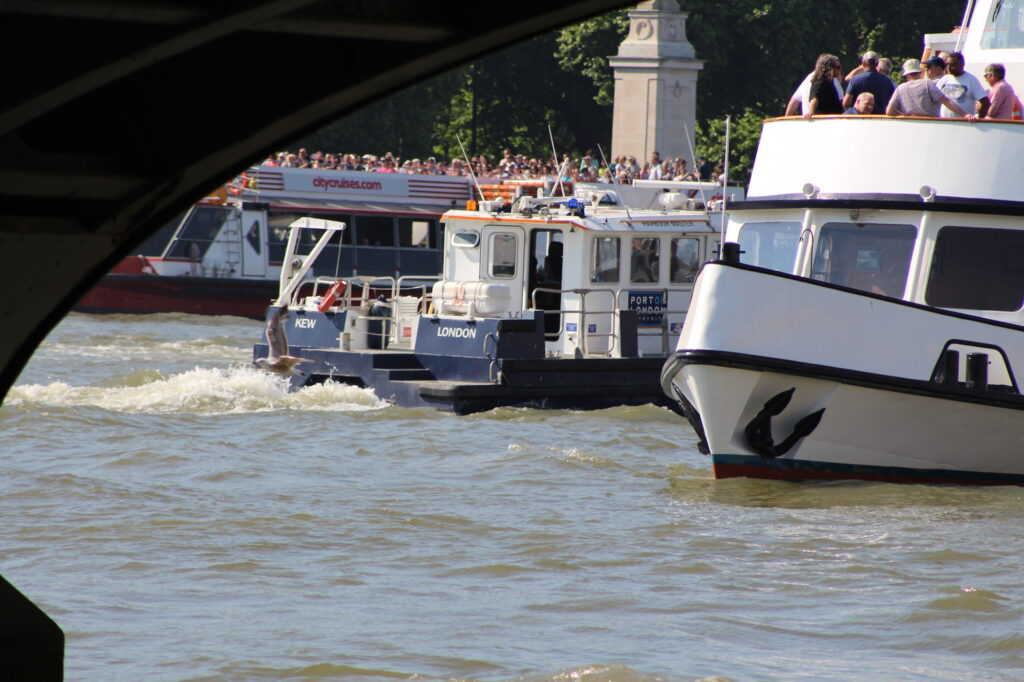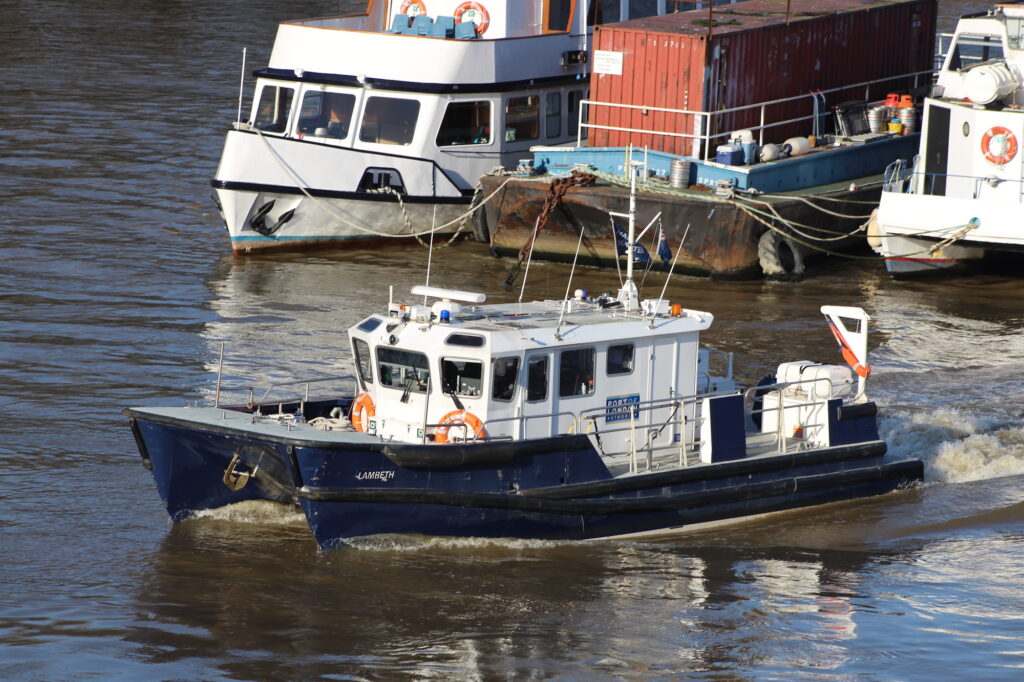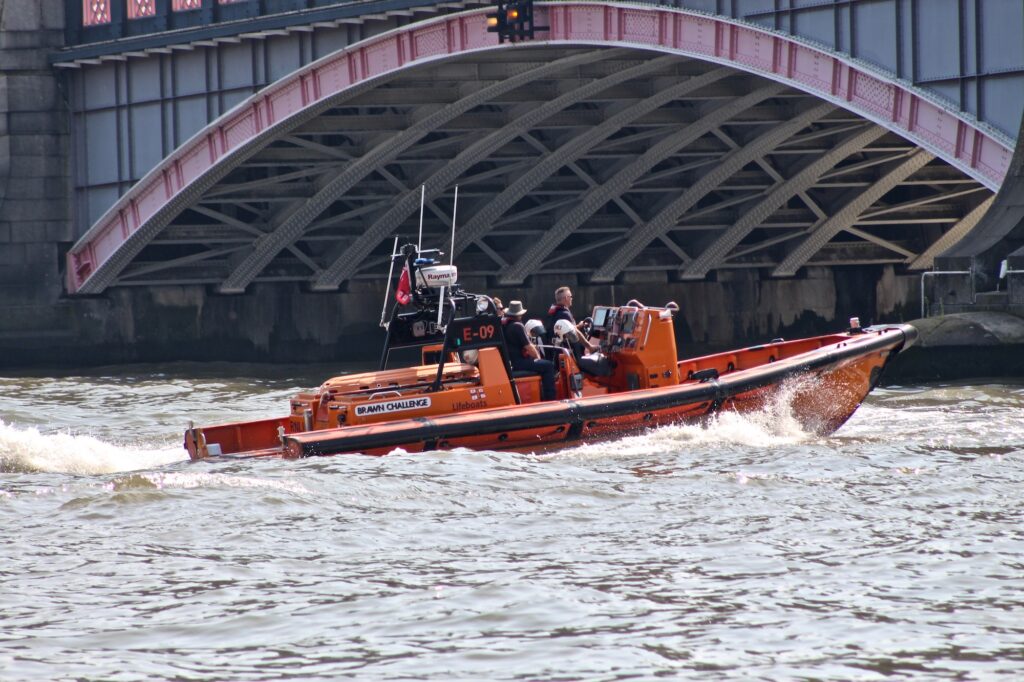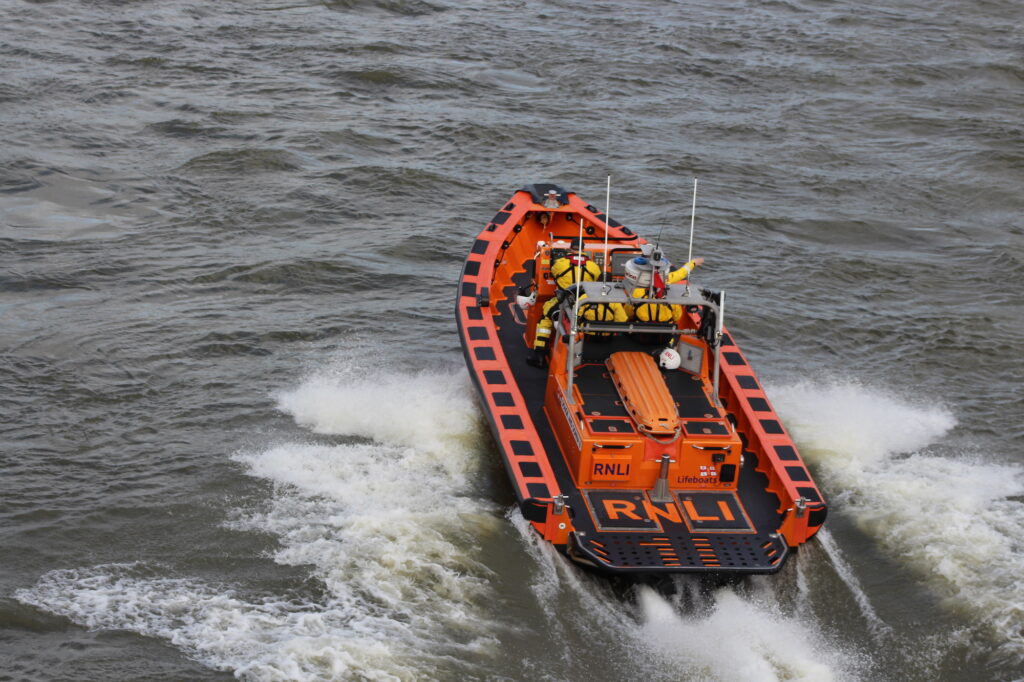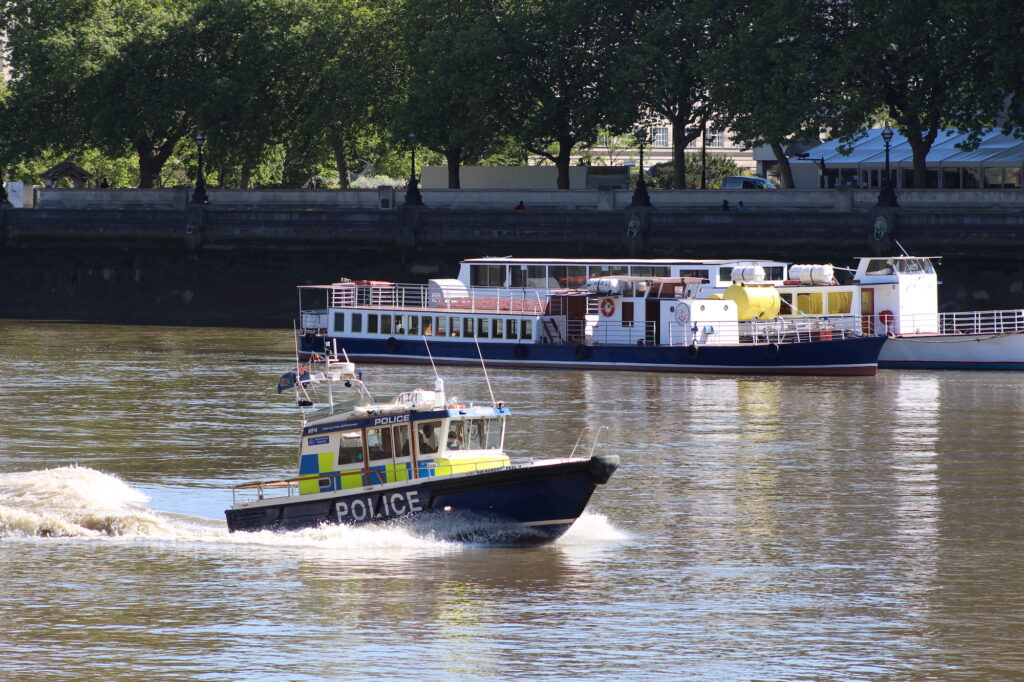Out on the Thames for pleasure, thrills, and… security
If a flash of red cuts across your sightline brightening up the river as you walk along the Thames Path National Trail in central London, you are most likely catching sight of a Thames Rocket, one of the three tourist Rib companies that ply for custom on the waters of the central London tidal Thames. Also vying for your attention are the yellow Thames RIB Experience and blue ThamesJet craft as they surge forward leaving behind an impressive trail of foaming white water.
As social distancing and other rules in this time of Coronavirus are constantly subject to change, it would be wise to check up-to-date arrangements with each individual company by clicking on the links above here or at the end of the piece. But so far, since the easing of the initial lockdown, things seem to have been ticking over albeit at a reduced capacity.
Thames Rockets have two starting points: one from the London Eye, which is basically a sightseeing tour and the other from London Bridge City Pier, a high speed trip to the Thames Barrier and back. Since Charlie Matheson created the company in 2006, it has become “one of the most popular ways of seeing London”. Not only do visitors see the famous sights from a different and interesting water-level perspective, they also enjoy a lively commentary and the excitement of speeding along certain sections of the river.



The Thames Rib Experience company’s striking waspy-coloured craft have been skimming the waters of the Thames at high speed for over ten years to the delight of their passengers. Boarding from Embankment Pier, Tower Pier and North Greenwich Pier, they enjoy an exciting ride while discovering central London’s notable sights and buildings.



ThamesJet, the newest of the three Rib companies, is owned and operated by the long-established City Cruises, who as you may have seen, run a large fleet of sightseeing boats that show off London and the Thames at a more leisurely pace. However, though the Ribs are available for private hire, their normal sightseeing service has been put on hold until April 2021 so it would be best to check out their website below.



But there’s a more serious side to Ribs on the Thames. From time to time a fast moving Police Rib will disturb the water. Highly manoeuvrable and versatile, these lightening speed Ribs are used for security training and escort duty, but their main purpose is, when necessary, to carry armed response units swiftly to the scene of an incident. Their firearms crews are ready to intervene at any moment and, if you’re lucky, you can sometimes see them in training.
A recent film by Maritime Police Instructor Danny Mizon posted by @liquid_highway1 shows one of their joint exercises with Thames Clippers, and he goes on to quote Mizon, who wrote: “Training our colleagues to board larger vessels travelling at higher speeds has been part of both London’s and the national capability for many years now but we couldn’t do it without the cooperation of our industry partners.”


In March 2017, the counter terrorism police worked with City Cruises on an exercise involving the highjack of a sightseeing boat on the river Thames. The simulation was very realistic and warnings that this was going to take place with high speed pursuits and gunfire, were put out in advance on social media and elsewhere, so as not to alarm the public. It brought together, the Port of London Authority; the Coastguard; The RNLI; the London Ambulance Service; and the London Fire Brigade in a valuable exercise of coordination and cooperation underling the importance of protecting the river as lifeline to our city
Click on the Thames RIBs below to see latest information and Covid Secure preparations
Thames Rockets
Thames RIB Experience ThamesJet and ThamesJet Private Hire owned by City Cruises



